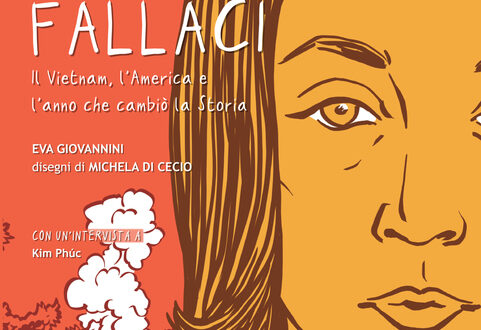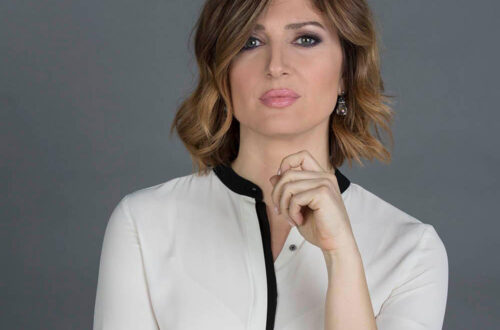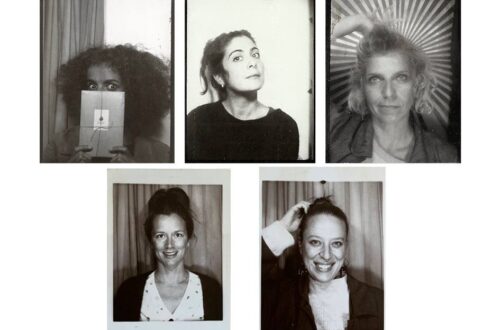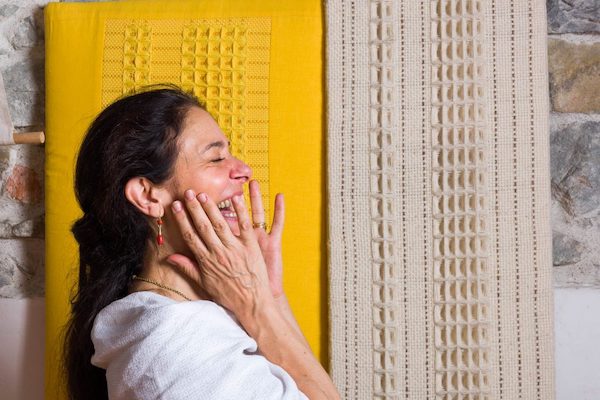
Interview with Artisan and Weaver Laura de Cesare
This interview appears in the January 2021 Issue of The Open Doors Review. To view the magazine, click here. To view the Italian transcript and original audio in Italian, click here.
Introduction
Laura de Cesare is a weaver, designer and teacher, with a laboratory and atelier located in Pisa. She works with large wooden looms to hand weave anything from scarves and shawls to tablecloths and decorative objects for the home as well as products in collaboration with high fashion houses that want to bring a unique and personal touch to their designs.
Loom weaving has existed since the 5th century bc and during our conversation Laura and I talked about the ancient, even mythical origins of the craft of weaving and their tendency to be at the forefront of modern innovation from the industrial revolution to the binary code that laid the groundwork for modern computer programming.
More than anything I was struck by Laura’s dedication to following the path of most inspiration. Since she was just starting out in her early 20s and questioning her heart to opening her own artisan business in Italy to teaching students of all ages and backgrounds, her mantra is the same: Never stop asking yourself, what do you really love?
This conversation has been translated from the original Italian into English. You can hear the original and the English language re-read in audio format on opendoorsreview.com or wherever you get your podcasts. The full transcript is available on the Open Doors Blog.

Interview (Translated from Italian into English)
Lauren: When did your passion for making fabrics begin? Were you always interested since you were a child?
Laura: No no, actually I wanted to be a ballerina at the beginning, when I was young. But my father didn’t take this dream seriously. So, that was all a bit difficult. I always loved music and I studied singing but then they sent me to a completely classics-based high school program. It took me awhile before I got into weaving.
I was born and raised in Milan but I enrolled to study pedagogy or teaching in Florence because I didn’t want to live in Milan. I had already chosen to live here in Tuscany. So, I enrolled in a university in Florence but then, after a year of studying teaching, I realized that I didn’t want to continue that either. So, I asked my parents if they’d give me some time to think about what to do with my life. I stayed in Pisa for a few months and asked myself: “What do you want to do with your life?” And one day, walking across the bridge in Pisa, I remembered that when I was very young, I used to love costumes and fabrics and clothes. I had already started down a very personal path of discovery, of looking deeper into myself. I already had the key to questioning myself even if I was quite young, just a little older than 20. And the answer was: “Maybe the first thing to do is go and search, go and understand … how do you construct fabrics?” And from there I began my journey.
First, I went to Lucca to a weaver that has since become a good friend, even to this day. And from there, after working with her for some time, I followed a second address I’d found in Florence to a woman that is still my teacher to this day. I go to her any time I need help with something difficult.
Lauren: What a lovely story!
Laura: Everything in life comes back again. I studied teaching and then I studied weaving, textile design and from there I fell completely in love with fabrics and with weaving. But then, and here the story continues, because in 2005/2006 I decided to start my dream business and I discovered I had a great vocation for teaching. I really love teaching my work to others. I started at the university and took any opportunity that came my way and I’ve never stopped teaching. So, pedagogy definitely came back to serve me in an unexpected way.
Lauren: How long did it take you to learn the technique of weaving?
Laura: I started in ’87, ’89 and I never stopped. I always say that learning to weave and to design fabrics is like music. It’s very similar because the language is the same. You never stop composing, learning, discovering new melodies and inventing others.
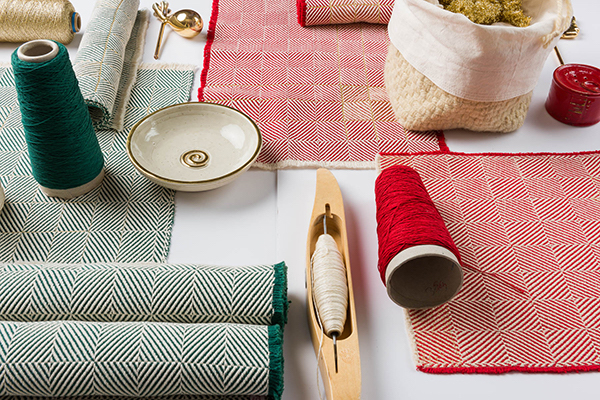
Lauren: For someone like me (that has never worked with a loom) can you tell me how long it takes to make a piece the size of a tablecloth? As an example?
Laura: It depends on the yarn, how thin it is, how complex the design and what type of loom you’re using. So you can make some in half a day or a full day from mounting the frame and doing the weaving. But there are fabrics that take a week to prepare.
Lauren: As an artisan, how do you find working in Pisa?
Laura: Well, my life choices brought me to Pisa so that’s why I’m here, not specifically for my job. Pisa isn’t a great marketplace, I have to say. It’s hard for a few reasons, first being an artisan in general, anywhere in Italy is difficult. Second, being a weaver is even more difficult as it’s a very niche market and quite expensive if you want to buy a scarf or a shawl made by hand in comparison to the millions of beautiful scarves you can find made by machine at an industrial level. That said, I work with all of Italy and a bit with foreigners too. Slowly but surely people are starting to seek me out here.
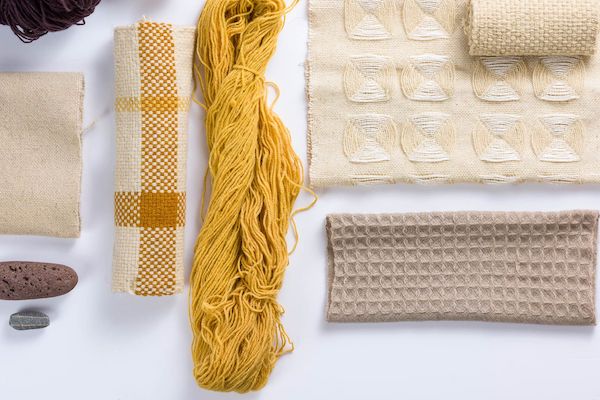
Lauren: Do you think the presence of tourism helps local artisans to grow or does it not have much of an influence?
Laura: Of course it has an influence! Tourism is an enormous source of income all over Italy. We have incredible things in this country and I’m not just talking about Botticelli’s “Venus.” For example, think of Pisa, the Palazzo Reale has three 16th century pieces of clothing on display that are simply incredible. I’ve been inspired to invent hundreds of designs just from one of those pieces. Then there’s a dress of red velvet that was possibly owned by Eleanora di Toledo, the wife of Cosimo I de Medici. It’s one of the few pieces of clothing that has come down to us with sleeves – in the whole world! Then the Lungarno of Pisa, in my opinion, is just as beautiful as the banks of the Seine or of the Tiber River in Rome. It’s a gem but if we don’t promote it, people don’t know about it so it gets taken for granted like so many places in Italy. It’s not just about San Gimignano, the Uffizi, Piazza della Signoria. Tuscany is marvelous. All of it. Italy is incredible. The whole thing!
Lauren: For you, what’s the main difference between an artisan-made product and an industrial one?
Laura: Well I’ll say it this way even if some people might not get it… It has a different energy. I think about the person I’m making it for. The difference is in how it’s made, how it’s born, alongside the possibility that it’s something that’s been specifically commissioned. The best things emerge when a client comes to me saying, “Listen I want a shawl to wear on this particular, special day.” And so, we talk about the color and the “how” and the “why” and a unique object is born. I don’t want to compete with industrial textile manufacturers. The textile industry produces wonderful products. I make special, unique things, that’s it.
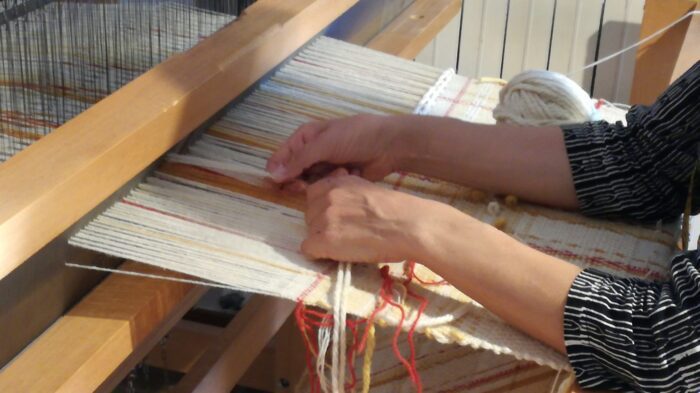
Lauren: You wrote something on your website which I loved: “Each weave can be a thought, a dream, a desire. Tales and stories of threads, fabrics, and weavers in Myths and Fables are the background to this unique experience.” I just love that.
Laura: Weaving is saturated in myth and fable because it is, how can I say this… on one hand, in a piece of weaving I put my thoughts and my feelings into the very weft itself. And on the other hand is the fact that the practice of weaving is an archetypal work because it reminds man of when he started to make plans. It reminds man of when he stopped hunting in a primitive way with a stick, the same as agriculture and many other forms of craftsmanship. They introduce the concept to man that he is capable of foreseeing what will happen. I know that if I plant this seed now, in two or three months, something will grow. I know that if I design a textile and I set up my loom that soon I’ll have a fabric.
I always tell the kids I teach to remember that the patron of weaving and of agriculture, not to mention war strategy is Pallas Athena in Ancient Greece. She wasn’t born from froth of the sea like Venus but from the brain of her father Zeus, completely armed. The patron of weaving is also the goddess of intelligence, of knowledge.
When you see a person weaving, you are seeing the echo of the history of mankind. It goes so far back. Weaving has always ridden the wave of progress. The first motors were applied to looms. The industrial revolution started in England in the textile industry. Just think of the language of binary code that came from the Jacquard loom: full, empty. Zero, one. The concept of programming came from weaving and was subsequently applied to numerical calculations. Weaving has a unique modernity because it implies planning and design.
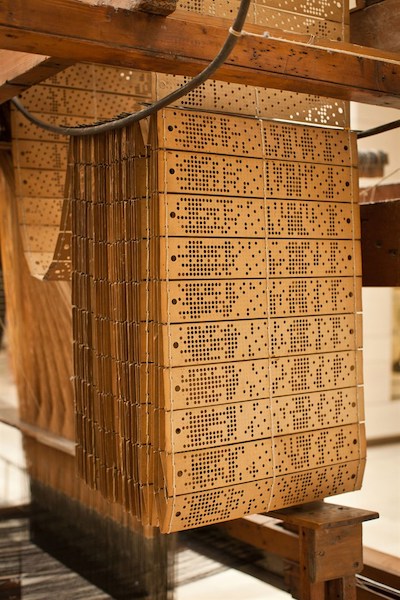
Lauren: You teach university students and children. Do you also do courses for tourists?
Laura: Oh yes, definitely! There are various courses I offer, even a simple half day experience of a few hours or a full day and there’s also week-long courses. They can experiment with ancient fabric designs like the “Lucchese weave” or the “Diamantina weave” … that is the famous one from the dress in the Palazzo Reale that we were talking about earlier. Then we can practice making more modern things too. I tell the stories connected to these designs and also give advice on what museums and places to visit to see these clothes in the original. Through the observation of textiles, you can understand the history of a country, the traditions and the period in which they were born.
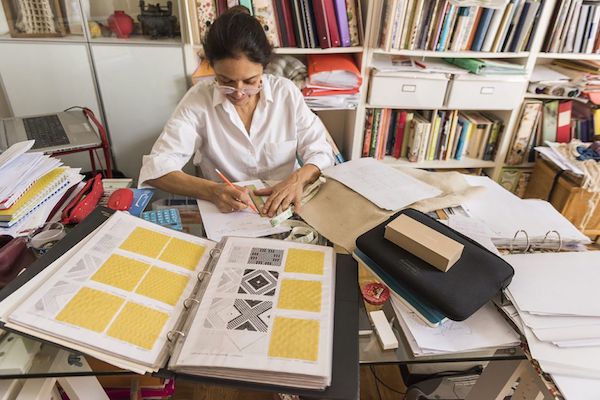
Lauren: My last question is, what part of your work excites you the most? Is it working on the loom or coming up with new designs or seeing the final product? Teaching? Maybe… everything?
Laura: I love everything, but I have to say that the thing that excites me the most is designing the punch cards! That is to say, the creation of the technical cards in binary that express the final design of the fabric, the filled and empty squares that guide the movement of the yarn and the warp and weft of the threads made by the loom. That is my favorite part.
Lauren: It’s the part that seems like magic to me!
Laura: It is a kind of magic! It’s amazing. That’s where I have the most fun, like a kid playing with Legos. And even now I’m surprised that I enjoy it so much and I wonder where it came from. I mean, I wasn’t born to artistic parents, you know? Who knows where it came from? But it’s a great gift, to do something you love. I always say to the kids, “Never give up asking yourself what you love….What do you love? What would you like to do with your life?”
You know the film, Billy Elliot? He has a hard life but he dances. He dances! And when they ask him, “When you dance, what do you feel?” And he says, “I am pure electricity… I don’t think of anything anymore, I just fly.” That’s it. We must never forget that. That’s what gives you the joy of life. Even with all the problems you have every day, throughout your life, if you can do something you love, it gives you strength.
To find out more about Laura, her work, and the classes she offers (from half day to weeks-long classes) visit her website: www.lauradecesare.it.

